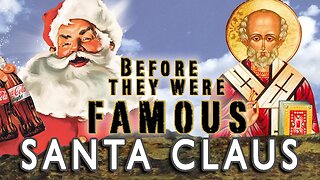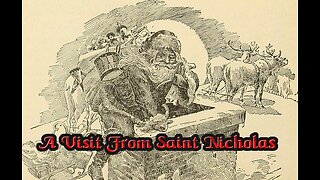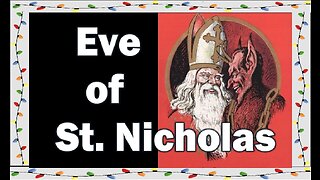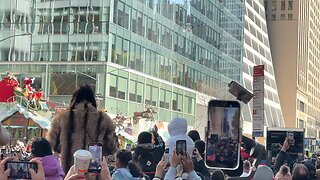St. Nicholas Day – December 6th - Part 2
What is today? The real history of Santa Claus can be traced back to the 4th-century Christian saint, Saint Nicholas of Myra (modern-day Demre, Turkey). Born in the late 3rd century, Saint Nicholas became the Bishop of Myra and was known for his acts of generosity and kindness, especially toward children and the less fortunate.
Saint Nicholas was revered for various charitable deeds. One of the most famous stories involves him secretly providing dowries for three impoverished sisters, thereby saving them from a life of destitution. His reputation for kindness and anonymous gift-giving to those in need led to him becoming the patron saint of children, sailors, merchants, and more.
The veneration of Saint Nicholas spread throughout Europe, and his feast day on December 6th became a time for gift-giving and acts of charity in many regions. Different cultures incorporated various traditions surrounding Saint Nicholas Day, with the custom of leaving out shoes or stockings to receive gifts being one of the enduring practices.
Over time, the figure of Saint Nicholas evolved within different cultural traditions. Dutch settlers in America brought their stories of "Sinterklaas," a figure based on Saint Nicholas, to New York. The Dutch name "Sinterklaas" eventually transformed into "Santa Claus" in English.
In the early 19th century, the image of Santa Claus began to take shape in popular literature. The poem "A Visit from St. Nicholas," also known as "The Night Before Christmas," published anonymously in 1823, played a significant role in shaping the modern portrayal of Santa Claus. This poem described Santa as a jolly, rotund figure who delivered gifts on Christmas Eve with a sleigh and reindeer, entering homes through chimneys.
Various artists and writers continued to contribute to the popularization and solidification of Santa Claus's image throughout the 19th and 20th centuries. Notably, the iconic illustrations by Thomas Nast in the 1860s and the Coca-Cola advertisements in the 1930s further popularized the image of Santa Claus as a white-bearded, cheerful man in a red suit.
The evolution of Santa Claus combines elements from Saint Nicholas's history, folklore, cultural traditions, literary works, and commercial influences. The figure of Santa Claus has become a symbol of generosity, kindness, and the spirit of giving during the Christmas season, embodying the values associated with the original saint while evolving within various cultural contexts and interpretations.
----------
Patreon: https://www.patreon.com/whatistoday
----------
SOCIAL MEDIA:
YouTube: https://www.youtube.com/@whatistodayvideos
Facebook: https://www.facebook.com/whatistodayvideos
Twitter: https://twitter.com/whatistodayvid
TikTok: https://www.tiktok.com/@whatistodayvideos
Pinterest: https://www.pinterest.com/whatistodayvideos
Instagram: https://www.instagram.com/whatistodayvideos
----------
Please Support the Channel!!!
----------
#santaclaus #santa #christmas
----------
-
 1:42
1:42
Tune Basics
3 years ago $0.02 earnedThe True Story of Saint Nicholas
1822 -
 1:02
1:02
Queen of Angels Catholic Store
2 years agoSt. Nicholas Feast Day
19 -
 8:12
8:12
Legends Lore & You
5 months agoThe Legend of Santa Claus: From Saint to Symbol
8 -
 4:26
4:26
BeforeTheyWereFamous
8 years agoSANTA CLAUS - Before They Were Famous - Happy Holidays
6 -
 3:17
3:17
Archaeonaut
1 year agoA Visit From Saint Nicholas ('Twas the Night Before Christmas)
11 -
 4:43
4:43
John Shepherd McKenzie
1 year agoSt. Nicholas Day
18 -
 12:46
12:46
Speak English podcast with teacher Georgiana
2 years ago#195 Santa Claus – Fun Facts – ESL
178 -
 13:06
13:06
Brave Warrior Productions
1 year agoDECEMBER 6TH: Eve of St. Nicholas (Pagan Origins of Christmas Pt#2)
38 -
 0:53
0:53
RyanReporting
1 year agoSanta Claus Merry Christmas NYC USA 2022
214 -
 5:55
5:55
RealmOfStories
5 months agoThe Fascinating History of Christmas
8